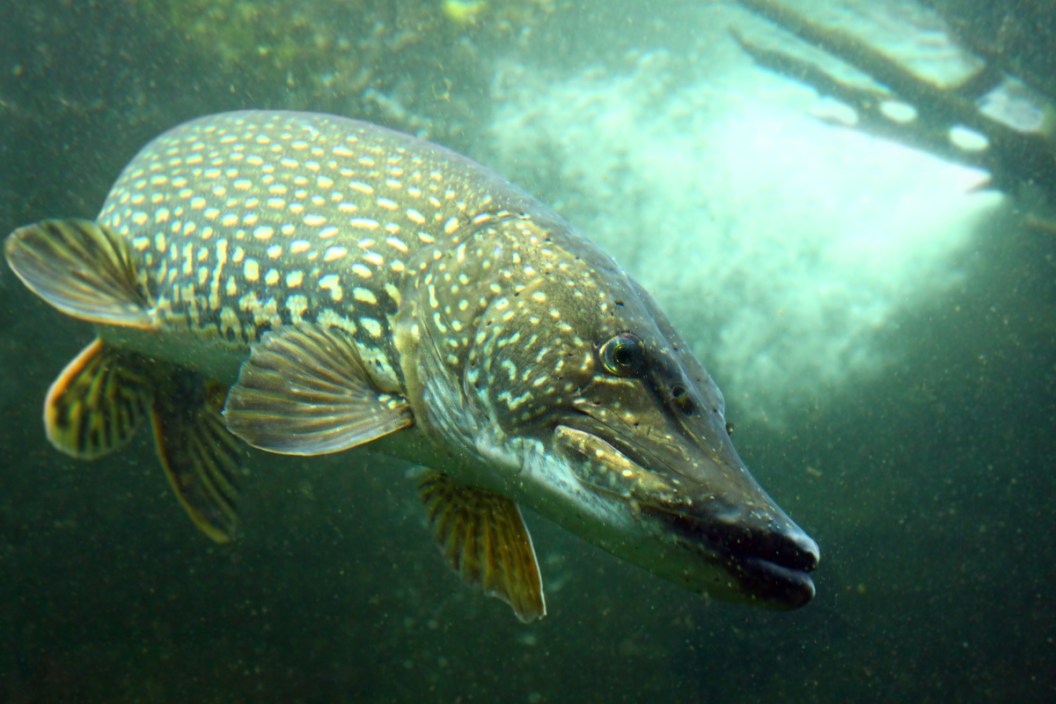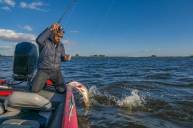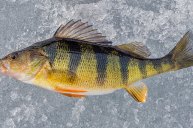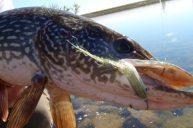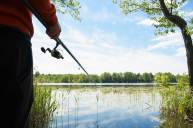Getting to know one of our favorite game fish species a little better. Here's more on the northern pike.
What is it about the northern pike, aka the water wolf, that gets fishermen so distracted? Is it the fact that they will seemingly eat anything that moves in the water column, or the fact that they will savage our fishing gear down to the tip of the rod?
We love them and we curse them, but we have to admit one fact: we love to fight them once they've latched on.
Unlike their cousin the muskellunge, northern pike are not that difficult to target in most angling scenarios. They are a predatory freshwater fish species that loves to stalk, target, and then ambush their prey.
Let's look into them as a fish species a little further, where they exist in the world, and even some pointers as to how to catch them. They will come out of the water after your bait, or after a duckling. They have even been known to go after your toes on rare occasions.
The Water Wolf
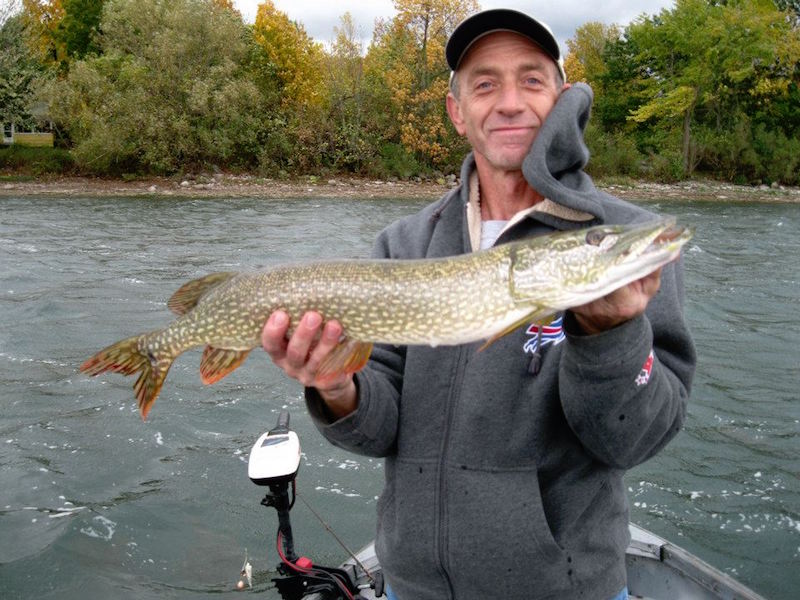
Craig Raleigh
They are one of the most photographed fish out there since they constantly attack anything we throw into the water. But they are also responsible for a drastic loss of fishing tackle. In fact, we were starting to wonder if they were stocked by Bass Pro/Cabela's back in the day!
All jokes aside, pike are great for fishermen since they so often cooperate to make our day a bit more lively. When the pike bite is on, there is no telling when and where they will come from. They can be one part wary, and two parts territorial, but they are all teeth and attitude.
Northern Pike Range
According to the U.S. Fish & Wildlife Service, (FWS) "Northern Pike are distributed between the Arctic portions of North America, Europe, Asia, and Siberia." As those of us that have followed these toothy critters for a lifetime know, in North America their population extends from Alaska through Canada to the upper mid-west, and everywhere in between. They are a common sight in waters like the Great Lakes and even the mighty Mississippi River and Missouri River.
In places like Ireland and France, they grow to enormous sizes and have a following among fishermen that cannot be denied. They love clean, clear lakes and river systems that are replete with any vegetation that they can hide in for ambush, but are also known to patrol larger more open expanses in places like New York's St. Lawrence River.
Diet
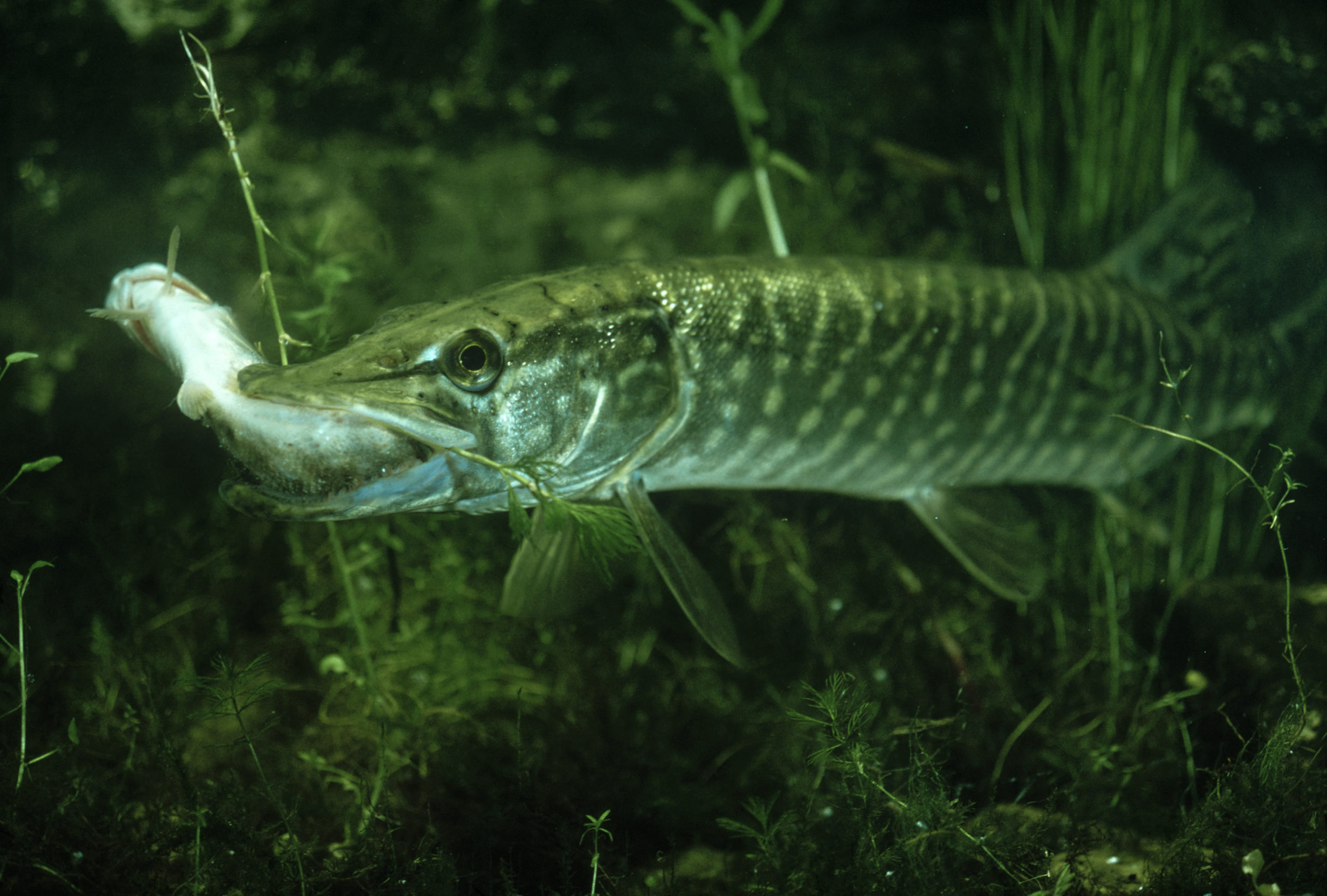
Getty Images: Oxford Scientific
It's almost kind of silly to say it, but the Esox lucius will at least try to eat anything that moves through its path. About the only time you won't see a pike feed is if their belly is already full. Every kind of baitfish from golden shiners to creek chubs, and from perch to sunfish is on the menu including any game fish of almost any size or weight have been known to be targeted by pike. Bass, walleye, and muskie are all on the menu. They are also cannibalistic if the opportunity arises.
Not only that, but pike can and will attempt to eat baby beavers, muskrats, ducklings, squirrels and other small mammals. They will even target birds if they think they can catch them. I have personally watched a northern pike try its best to attack and devour my red and white bobber. My cousin tied on a Dardevle spoon in the same color, and put that pike in the boat a few minutes later!
Breeding/Lifecycle
The northern pike has an early spawning pattern, gathering in shallower marshy areas as soon as the ice breaks up and water temperatures allow them to move in. Pike are always territorial, but during the spawn they can get ferocious about their nesting sites.
Males will begin to find and nudge a receptive female around her head area to induce her to release her eggs. This is followed by the male releasing his milt. Fertilized eggs don't take too long to hatch usually in around three to six weeks depending on the conditions.
Pike fry will assume a position in weedier areas for cover and food while they develop and grow, feeding on zooplankton until they are mature enough to hunt small fish.
These juveniles will hide and hunt in any area that offers cover as an ambush site, but they really love weed beds. If they are not patrolling the edges looking for forage, they will hang quietly in the cover waiting for an unsuspecting baitfish to get too close. Like all larger game fish, they prefer areas that have fast access to deeper water if they feel threatened.
Bass fishermen know all too well that pike are often the first fish to find their offering, and the last thing they see as a water wolf disappears with a brand new lure.
Fishing for Northern Pike
After reading some of the above, you may begin to think that just throwing a bait into the water would suffice. (And sometimes, you would be right.) However, depending on the conditions, pike can clam up like any fish species. The good news is there are so many good methods to try and be successful.
Live minnows such as shiners always get their attention, along with spinnerbaits and inline spinners like bucktails. Another good option is spoons with a lot of flash, and that's just the beginning. This is without saying how great a tactic that flyfishing for pike with a large streamer can be.
It should be said that this predatory fish has some seriously sharp teeth on both their upper and lower jaw, and can even inflict injury if the angler reaches inside of their gill plates. Many fishermen use 20-pound test wire leaders to ensure that break offs don't happen, while some will use larger sized braided line as a leader.
A good pair of fishing pliers are always the way to go when handling northern pike.
As for where to fish, target any weed edges with access to deeper water. Look for pockets in weed beds between thick patches that allow enough room for casting. Especially places where you can plop a bobber with a shiner under it. Pike love to ambush prey and will hang in or near good cover whether it's submerged cabbage weed, floating vegetation such as lily pads, or reeds, bulrushes, and even flooded grass.
Top 10 Things Found Inside of Pike
These are just a few of the wild things that have been found by fishermen inside of pike stomachs. Many of these things no doubt helped grow the legend of this fish.
- Nine-inch bluegill, still alive
- Star-nosed mole
- Baby beaver
- Young muskrat
- Northern water snake
- Magnet
- Baby waterfowl
- The severed tip of a fox tail
- Bratwurst
- Red-wing blackbird
Discoveries like this are also probably what has spurred a glut of nicknames beyond the common name. Jackfish, slough shark, slimer, slough snake, and gator to name a few.
The End of the Story
Northern pike are related to both the pickerel and the muskellunge. Fisheries for these freshwater eating machines are usually based on accessibility by boating, but large river bank and even stream fishermen can find them responsive to artificial baits.
As a natural resource, northern pike can actually be deemed an invasive species in some water systems due to the fact that pike populations can take over an area by devouring smaller fish at a rate that native species cannot recover from.
Pike are available nearly year round since they are active feeders even in winter. Most states have closed seasons on pike to give them a chance to reach their spawning areas and propagate. Areas with good populations of northern pike have listed some huge state records, and anglers everywhere will tell you stories of fish that got away that had a head like an alligator.
Products featured on Wide Open Spaces are independently selected by our editors. However, when you buy something through our links, we may earn a commission.
Looking for a new way to display those antler sheds? Go to Rack Hub and use the coupon code Craiger. Be sure to follow my webpage, or on Facebook and YouTube.
NEXT: 5 MISTAKES ANGLERS MAKE WHEN TRYING TO MASTER ONE BODY OF WATER
WATCH
